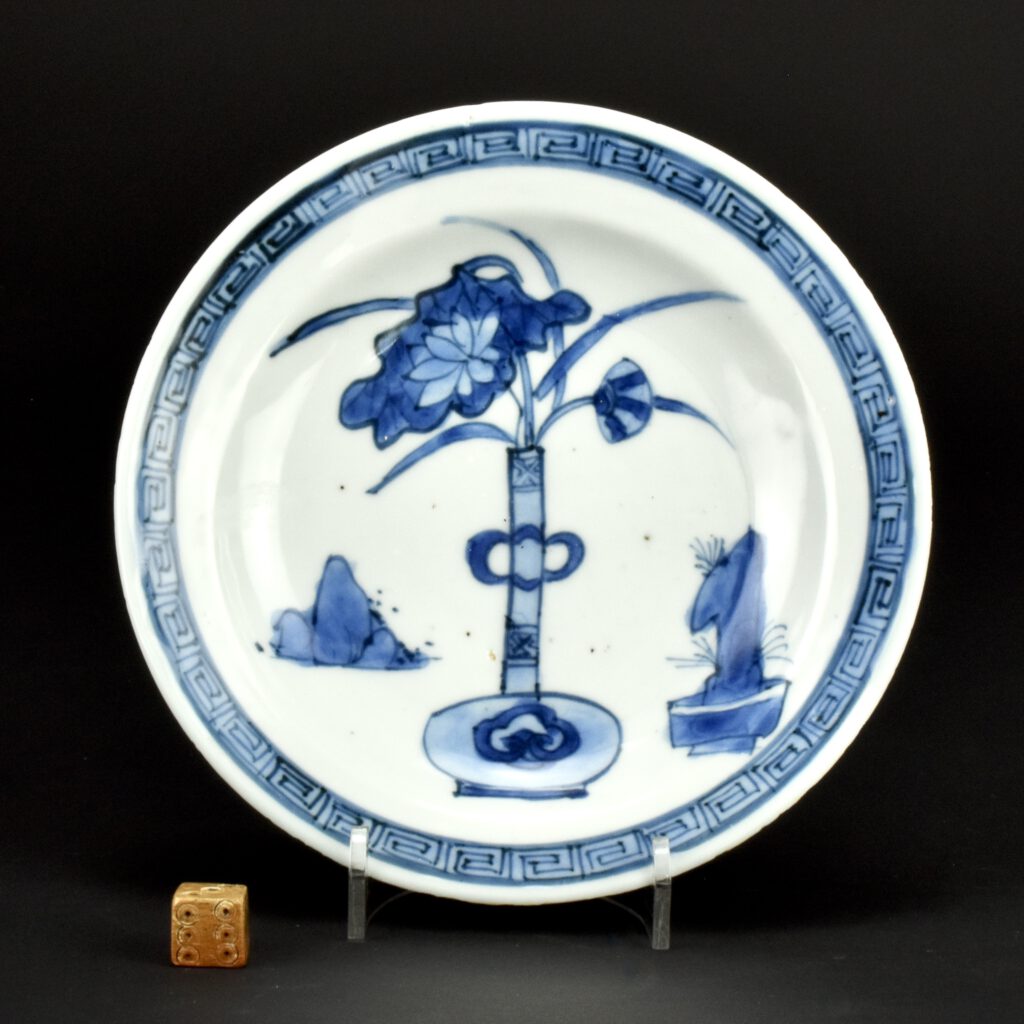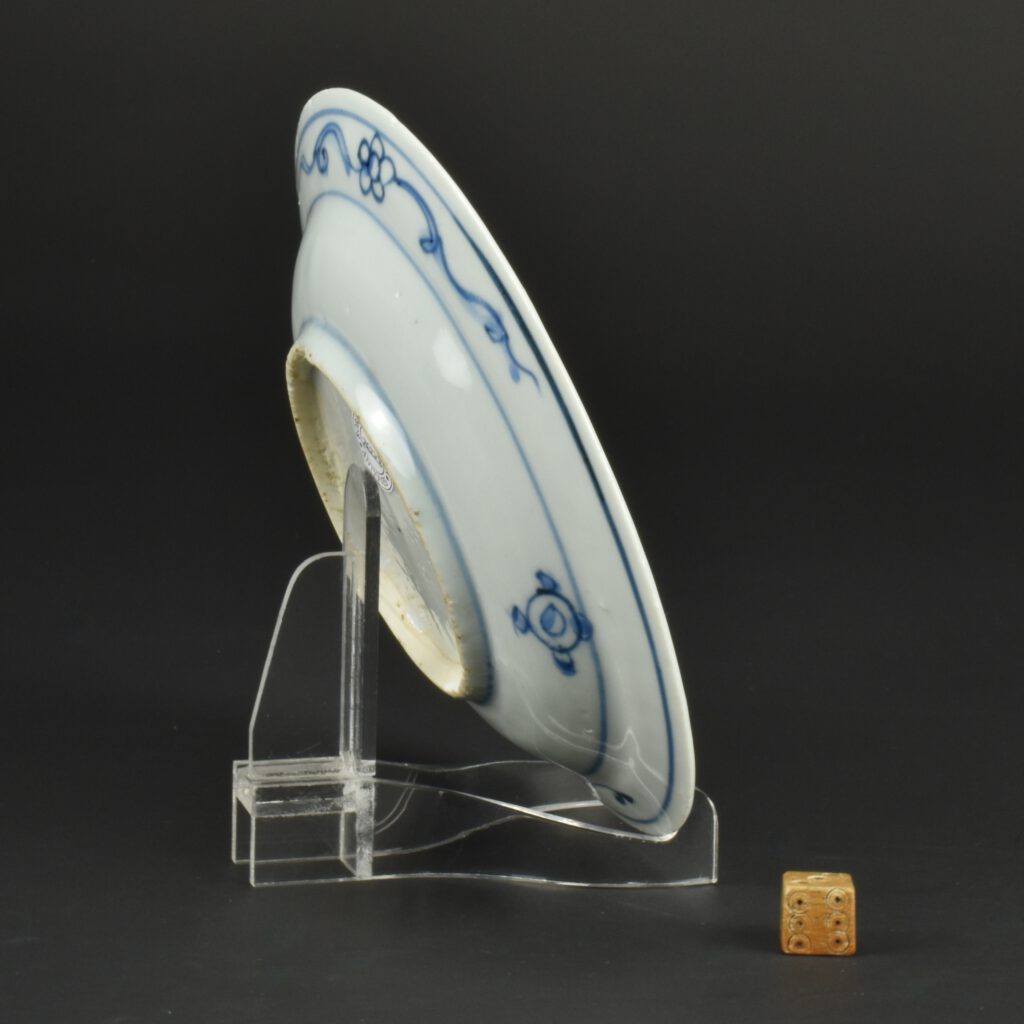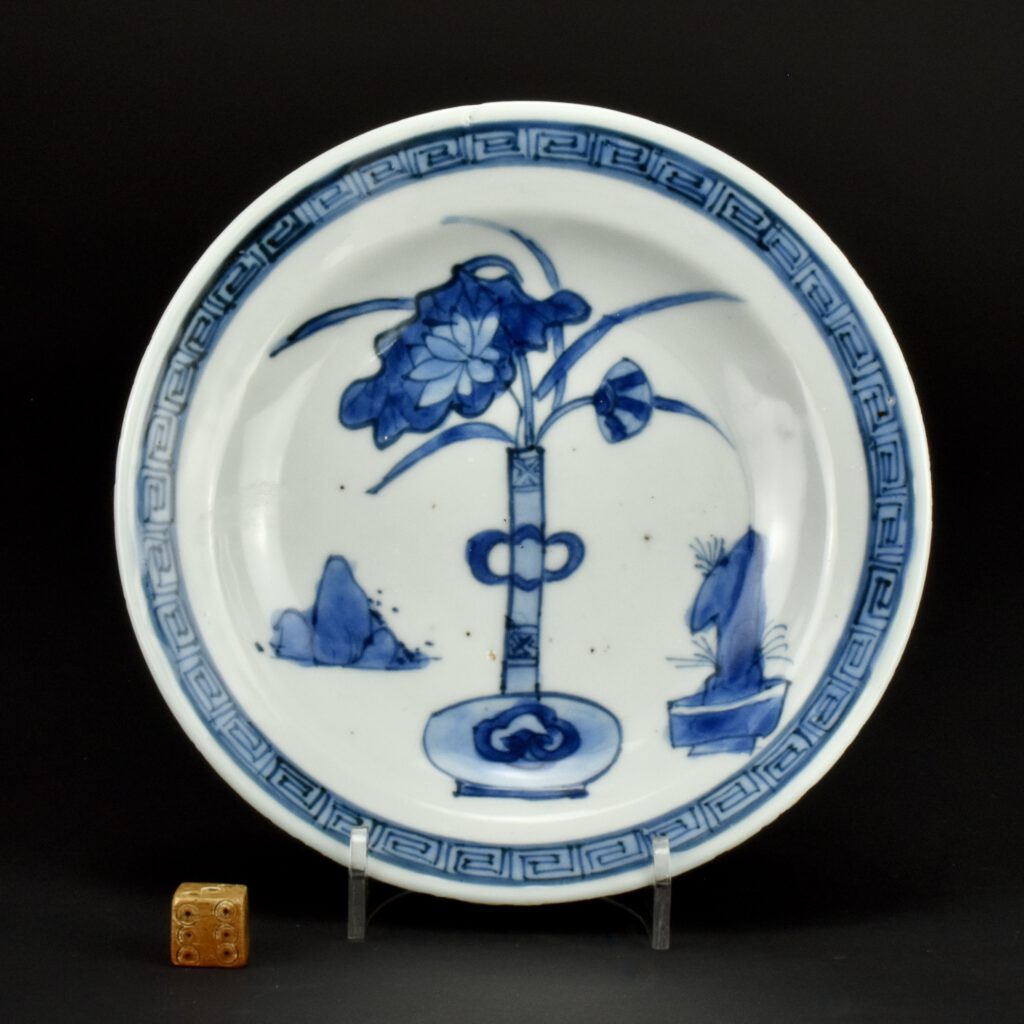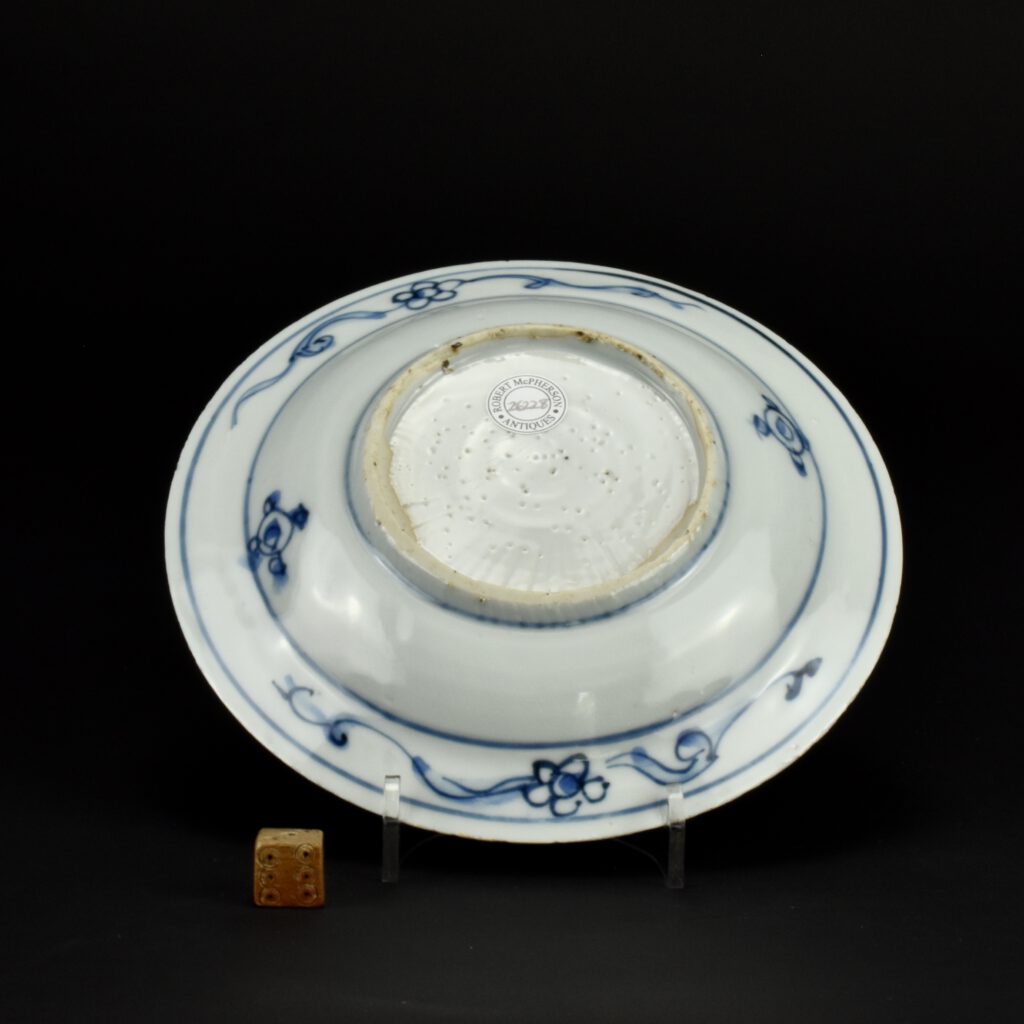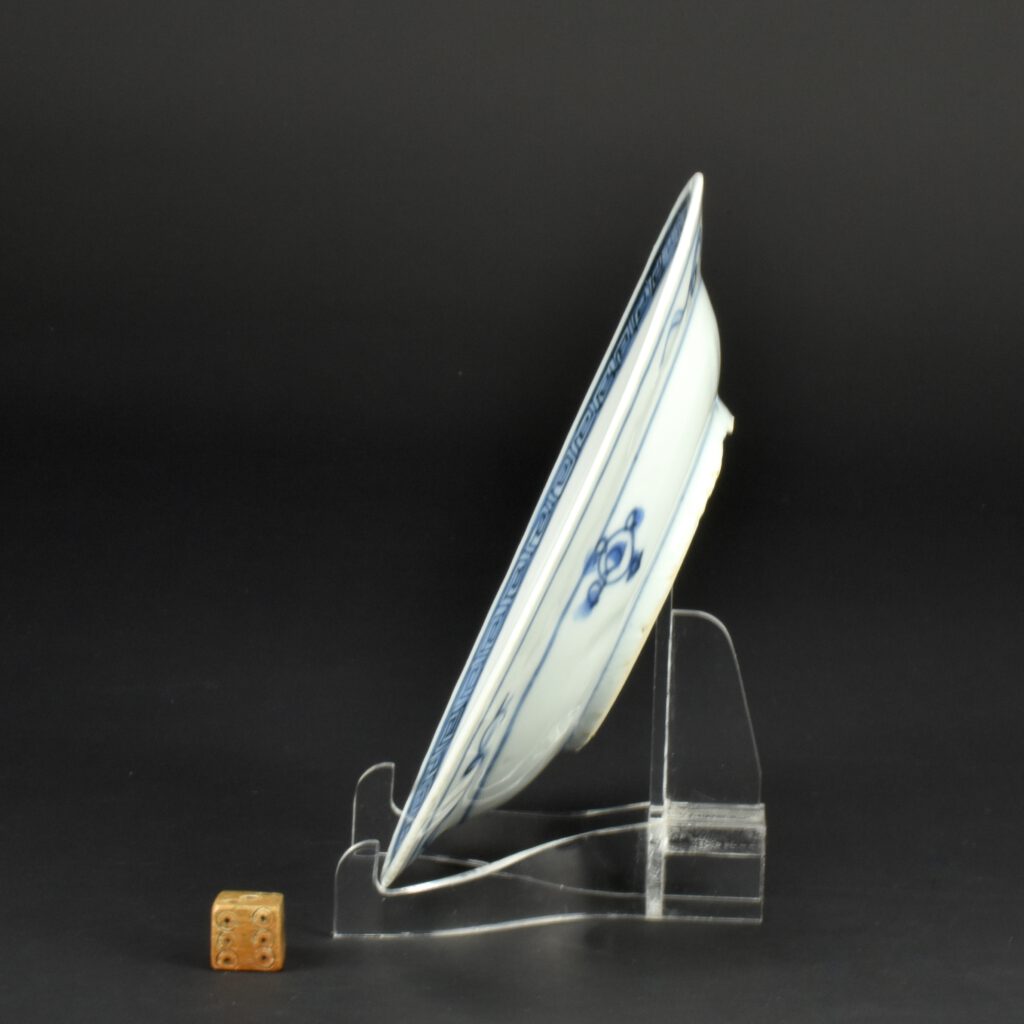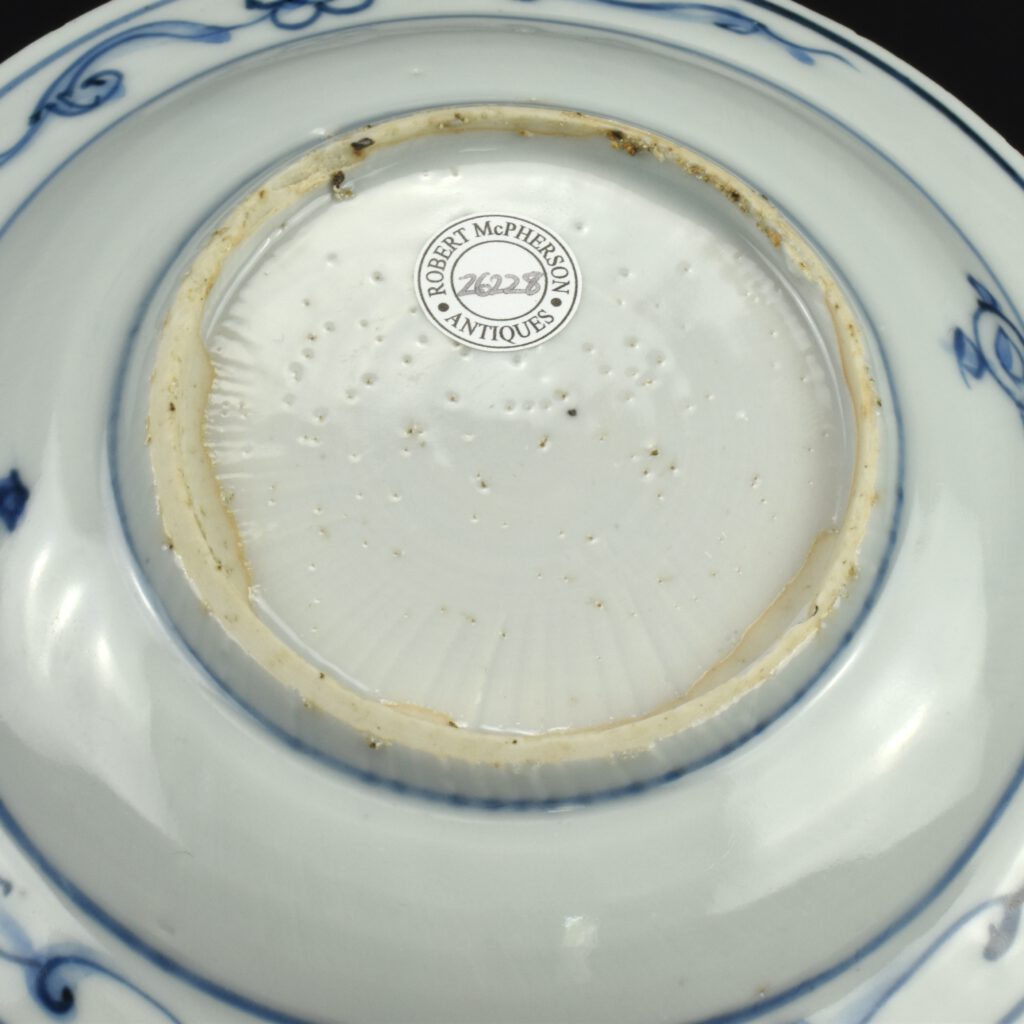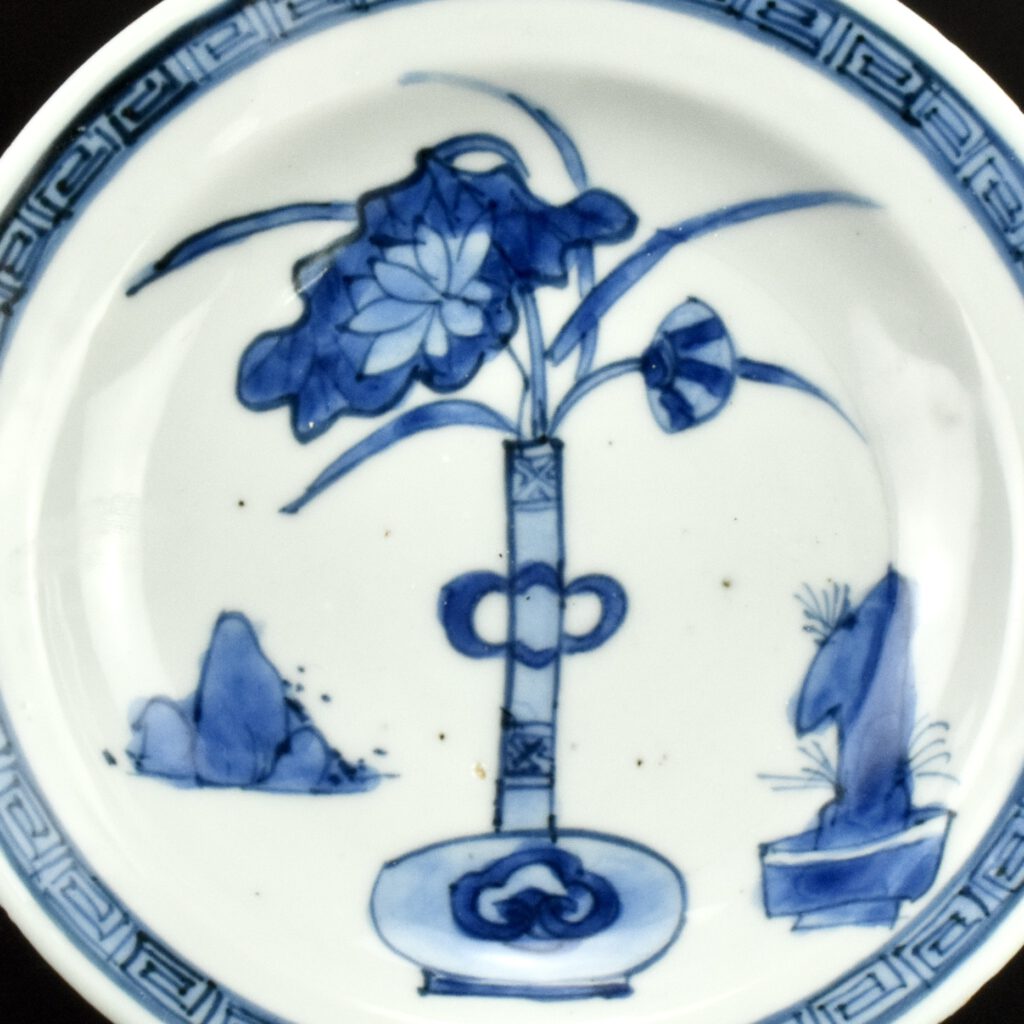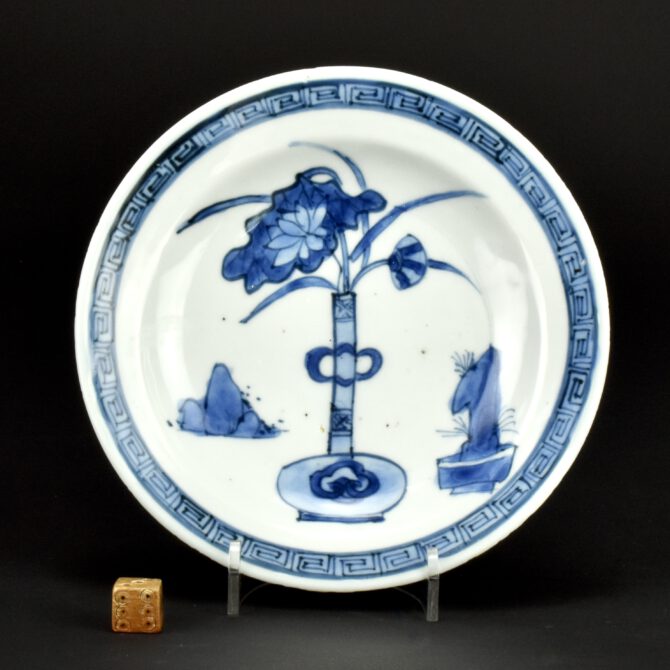
A Ming Porcelain Ko-Sometsuke Porcelain Dish
A Small Late Ming Ko-Sometsuke Dish, Tianqi or Chongzhen Period (1621-1644). This Transitional dish is finely painted with an arrow vase or vase with loop handles with lotus, the vase itself looks similar to contemporary Kraak porcelain. To the left and right are scholar’s rocks, on in a bowl with grasses growing around the rock. The border is in two shades of blue and probably derives from cloud motifs. Ko-Sometsuke is a term used to describe Chinese blue and white porcelain made for Japan, it means ‘old blue and white’. This late Ming porcelain was made from the Wanli period (1573-1620) until the Chongzhen period (1628-1644), the main period of production being the 1620`2 and 1630`s. The porcelain objects produced were made especially for the Japanese market, both the shapes and the designs were tailored to Japanese taste, the production process too allowed for Japanese aesthetics to be included in the finished object. Its seems firing faults were added, repaired tears in the leather-hard body were too frequent to not, in some cases, be deliberate. These imperfections as well as the fritting Mushikui (insect-nibbled) rims and kiln grit on the footrims all added to the Japanese aesthetic. The shapes created were often expressly made for the Japanese tea ceremony meal, the Kaiseki, small dishes for serving food at the tea ceremony are the most commonly encountered form. Designs, presumably taken from Japanese drawings sent to China, are very varied, often using large amount of the white porcelain contrasting well with the asymmetry of the design. The term used for Ming blue and white porcelain for the Japanese Tea Ceremony is Ko-Sometsuke which means old blue and white.
See Below For More Photographs and Information.
- Condition
- A firing fault to the foot ; a large chip, the glaze around it has a soft edge, showing this is a production fault. Minute frits to the rim, which is typical of Ming Ko-Sometsuke porcelain.
- Size
- 15 cm (5 3/4 inches)
- Provenance
- N/A
- Stock number
- 26228
- £ GBP
- € EUR
- $ USD
Information
Ko-Sometsuke is a term used to describe Chinese blue and white porcelain made for Japan. This late Ming porcelain was made from the Wanli period (1573-1620), through the Tianqi period (1621 - 1627) ending in the Chongzhen period (1628-1644), the main period of production being the 1620'2 and 1630's. This porcelain made in China for Japanese reflected a rise in interest of the Japanese tea ceremony but it also coincided with the beginning of porcelain production in Japan (from c.1610/20). The porcelain objects produced in China were made especially for the Japanese market, both the shapes and the designs were tailored to Japanese taste, the production process too allowed for Japanese aesthetics to be included in the finished object. Its seems firing faults were added, repaired tears in the leather-hard body were too frequent to not, in some cases, be deliberate. These imperfections as well as the fritted Mushikui (insect-nibbled) rims and kiln grit on the footrims all added to the Japanese aesthetic. These imperfections were something to be treasured by the Japanese, they reflect an imperfect world and the aesthetics of Wabi-Sabi. These 'faults' was an anathema to the Chinese but they went along with it to satisfy the needs of their Japanese customers. The shapes created were often expressly made for the Japanese tea ceremony, especially the meal associated with tea drinking, the Kaiseki. Small dishes for serving food at the tea ceremony are the most commonly encountered form. Designs, presumably taken from Japanese drawings sent to China, these are very varied and often extremely imaginative. They often used large amount of the white porcelain contrasting well with the asymmetry of the design, sometime the Chinese couldn't help themselves but to fill in these gaps with 'excess' decoration. Many other forms were made, among them are charcoal burners, water pots, Kōgō (incense box) as well as variously shaped dishes in the form of fish, fruit or familiar country animals.
